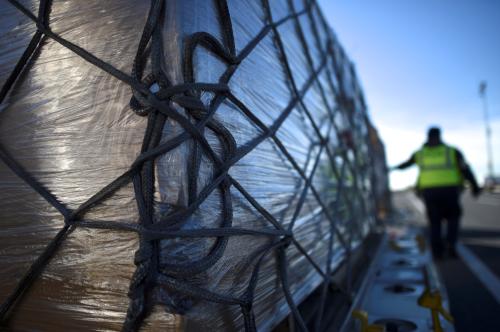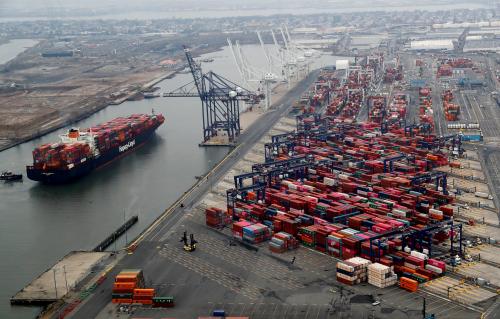For almost a century after the Second Industrial Revolution of the late 19th century, the iron ore mines of Minnesota were the main supplier of the American steel industry, located mainly in the Great Lakes area.
Iron ore mines in other locations, such as Brazil and Australia, could not compete with the American miners given the high transportation costs; therefore, most of the iron ore used to produce steel in America was also made in America. Exactly the way it seems President Donald Trump would like all industries to operate.
But, in fact, the iron ore industry—which had little to no foreign competition at the time—was not operating at its greatest potential, as shown in a rigorous study by Economist James A. Schmitz. In the early 1980s, as transportation costs declined, Brazilian producers entered the market and began delivering iron ore to steel producers in the U.S. They did so at lower prices than Minnesota miners did. Unexpectedly for the American iron ore producers, competition had arrived.
This story could have ended badly for American miners, but it didn’t.
In response to increased competition, the iron ore industry in the U.S. underwent important changes that led to increased productivity. Unexpectedly, iron ore producers doubled their productivity within five years following the arrival of these foreign competitors. These improvements had to do with adopting better work practices and more efficient use of machinery and materials, and even with innovating some of their mining processes. In this sense, it was foreign competition that drove the iron ore industry to become more productive.
There is one important lesson arising from this story.
It is more foreign competition, not less, that can revive the American steel industry. Without competition, the industry will have no incentives to make the right investments that will result in higher productivity. In fact, the data over the past three decades show that the American iron and steel industry has had a very modest export growth as measured by shares of total U.S. exports (it has consistently stayed around 1 percent, according to the Atlas of Economic Complexity developed by the Center for International Development at Harvard). What makes us think, then, that less competition will do the trick this time?
In addition, there are two more important factors to consider.
First, as has been pointed out by many economists, the imposition of trade tariffs on steel and aluminum will immediately increase costs of production for all the industries relying on these inputs (e.g., cars, beer, boats, etc.), making them less competitive in global markets and, therefore, hurting American exporters. Naturally, American consumers will either have to pay more to buy these products, or alternatively, decide to import them from other countries where they will be cheaper. The equation involving more expensive steel and aluminum imports, larger import flows of products substituting for the now less-competitive American ones that rely on steel or aluminum, fewer exports of products that have become less competitive due to the tariffs, or any combination of those three possibilities, will ironically worsen the trade balance which the president cares so much about.
Second, reducing import competition will have a direct negative impact on the productivity growth of these two industries, in turn slowing down the wage growth of their workers. Not having to compete as much with steel and aluminum foreign producers will reduce incentives for American businesses to invest in training their workers, in acquiring newer and better machinery, and, more importantly, in innovating. Thus, if at some point these tariffs are reduced or eliminated, American producers will be at a higher disadvantage for not having kept up with newer technologies. Naturally, the worsening of productivity growth in those two industries could also be detrimental for productivity growth in other industries. And, as it has been pointed out by many prominent economists, the slowdown in productivity growth is one of the greatest challenges all advanced economies face.
This is not to say that we have to ignore instances where more trade resulted in job losses for many. Many workers probably lost their jobs when foreign iron ore producers entered the market. In some cases, in the absence of productivity improvements, the industry facing foreign competition might not even survive, and their workers could be laid off. This inconvenient truth is something most economists have come to terms with, after minimizing the reality for years, partly because of the also correct assertion that the gains from trade outweighed these losses.
Thus, none of us should be surprised that the American public is asking from its politicians to be more careful when crafting trade policies. But, as I’ve said numerous times before, if Trump wants to stand out as the president who protected the American worker from the negative effects associated with freer trade, he must not do so by attacking trade, but rather by providing the right safety nets for these workers. Sadly, this is not the direction he has chosen to take with his push for tariffs.
The Brookings Institution is committed to quality, independence, and impact.
We are supported by a diverse array of funders. In line with our values and policies, each Brookings publication represents the sole views of its author(s).







Commentary
How imports helped the American steel industry
March 5, 2018